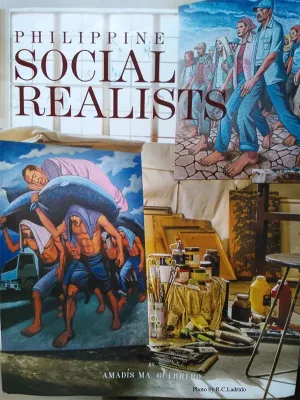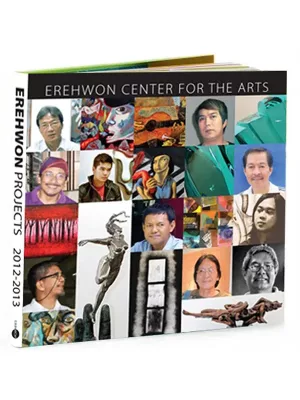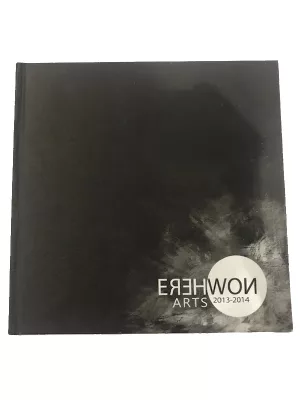Which was performed at the Tanghalang Nicanor Abelardo, Cultural Center of the Philippines last July 29 to 31, 2022. Let us share with you some reviews.
(reprinted from tatlerasia.com)
Tatler Review: Anton Juan's Musical Adaptation of 'Bayan-Bayanan' by Bienvenido Noriega
Words by CARLO LAURENA
August 19, 2022
This classic play, which captures the indomitable spirit of overseas Filipino workers at the onset of the Filipino diaspora in the 1970s, gets a musical restaging at the Cultural Center of the Philippines. Here's what we think of it:
Imagination makes a nation. Anyone with a smattering of collegiate-level history should recognise this Benedict Anderson paraphrase. For the historian to say that the nation is imagined is one thing. To ‘show’ it, however can only be an artist’s task, as Anton Juan proves in his eponymous musical adaptation of Bienvenido Noriega’s masterpiece, Bayan-Bayanan.
A spectacle weaved with poignant stories of overseas Filipino workers (OFWs) in 1970s Geneva, Bayan-Bayanan: Letters from Home, a co-production of the Erehwon Center for the Arts and Cultural Center of the Philippines, premiered last July 29, with the support of the French Embassy of the Philippines. Juan, an internationally renowned theatremaker and auteur, had already staged Noriega’s play not only locally but also in faraway cities, Athens, Chicago, Geneva, London, Paris, and Toronto—places which many OFWs now consider second homes. For Juan, mounting Noriega’s play is an act of “homage for the immigrants and migrants without whom [the Philippines] would have fallen by now.”
The Manila 2022 production is unique as Juan recasts parts of Noriega’s text—a tale of unmoored Filipinos who wax nostalgic about their horizons of origin—in verse, set to original music by Cleofe Guangko-Casambre, Russ Narcies Cabico, Andrew Bryan Sapigao, Jonathan Cruz (the musical director), and rendered by members of the Metro Manila Concert Orchestra. Also featured is a special song by Jerry Dadap, the first Filipino composer to perform his compositions at the renowned Carnegie Recital Hall.
“I begin with sound,” says Juan on his artistic process both as a dramatist and a director. In transforming Noriega’s play into a musical, Juan especially sought to preserve the spirit of the original text while collaborating with the composers.
Indeed, Bayan-Bayanan’s libretto and score prove to be worthy vectors of expression for the Filipino diaspora’s melancholy and tenacity while on terra aliena.
As the overture ‘takes off,' citing leitmotifs from musical numbers later in the show, Ohm David’s set design unfurls to reveal a living room nestled within the folds of an international airmail envelope. We are introduced to the play’s “migrant heroes", as Juan calls them, through a cast performance of “Rekruit.” The refrain’s first lines strike like thunder—an arresting declaration that these characters are first and foremost Filipinos, despite leaving behind the comforts and affections of home in search of fortune abroad.
“Ako ay Pilipinong nag-ibang bayan, iniwan ang pamilya at tahanan para lumaban!”
In true Chekhovian fashion, Bayan-Bayanan—although including a writer-character supposedly representing Noriega himself—articulates the experiences of many, not just of a single protagonist. The play owes its charm to the vibrant tapestry of stories these migrant Filipinos unknowingly weave together as they collide in Manang’s home to ‘play nation.’ Setting the frenetic tone of the first act, Aling Pia (Abi Sulit) indulges the audience with a Broadway-esque lampoon of fellow Filipinos abroad who would jeer at a bayong (a native tote made with buri or pandan). Sulit, brimming with energy, plays up Juan’s hilarious lyrics: “kay puti man ang mukha, maitim pa rin ang kili-kili!” (however fair the face, dark remains the armpit) in “Bayong ni Kabayan!”.
The Swiss sala—of Manang (Banaue Miclat-Janssen) the cook, Manong (Timothy Carlo Racho) the Philippine Ambassador’s chauffeur, and their French-speaking son Ricky (Ken Tamayo)—comes to life as the guffaws and laments of these Geneva-based Filipinos intertwine. Dino (Carlo Mañalac), the student-writer is, in Pinoy parlance, the bagong-salta (newcomer) beguiled by seasons and metropolises he has yet to experience and see. On the other hand, Pol (Macky Macaroyo), a disillusioned seaman who has overstayed his work permit, presages a tragic end with lines reminiscent of Rodolfo’s “che gelida manina!” in La Bohéme.
In comes Nurse Tessie (Ava Olivia Santos), daydreaming about her innamorato in Rome and defending her reveries against Pol’s realism. Anna Marie (Anya Evangelista), a Filipino-American mestiza, babbles about her vacation plans in Egypt, only to be upstaged by anecdotes from the Del Castillos’ (Carlo Falcis and Roxy Aldiosa), proving that it does take two (and many trips abroad) to tango. The Del Castillos bring with them Mr Luz (Greg de Leon), a UN functionary stricken with homesickness as soon as he sets foot on Swiss land.
Later in the play, we meet Connie (Jacinta Remulla), a soi-disant international model who competes with Uno (Uno Zigelbaum), the half-Filipino parisienne, for Dino’s affection. Accompanied by accordionist Pol Policarpio, Zigelbaum’s performance of Edith Piaf’s “La Vie en Rose” during a flashback scene in la ville lumière is an absolute visual treat, thanks to striking, iridescent lighting by Meliton Roxas Jr.
Juan, who has directed operas in the past, and musical director Cruz, must be praised for their adroit use of leitmotifs and melodies that capture the characters’ essences. He succeeds in making the characters' expressions of their inner wills, aspirations, and memories as the starting points for their songs, therefore resurrecting their inner music. Macky Macaroyo raises hairs as he leads “Kanta ng Manlalakbay”, his brooding baritone complemented by the ominous strings of Guangko-Casambre’s composition. Singing of the migrant Filipino’s alienation, Macaroyo as Pol shows how Bayan-Bayanan transcends its original context. His plight prophesies the hordes of OFWs to follow decades after, as the country’s economic situation worsens.
Carlo Mañalac’s bravura during Dino’s soliloquy at the start leaves spectators begging for more. Performing with Jacinta Remulla in “Taglagas”, Mañalac mellows down his tenor to suit the wistful temper of the song. Yet “Taglagas” mostly owes its pathos to Matteo Teehankee's performance as Pol’s son, his voice soaring with innocence and disenchantment in equal parts.
Greg de Leon’s rendition of Dadap’s “Nasaan”, evocative of the kundiman art songs of Abelardo and Santiago, reminds us that we cannot play nation without revisiting our musical heritage.
Most stellar are the performances of Banaue Miclat-Janssen and Ava Olivia Santos as Manang and Nurse Tessie. Aliw Hall of Famer and former supernumerary at the Metropolitan Opera, Miclat-Janssen shows incredible versatility as a musical actress. Donning a hairnet and apron at the start of Act I, Miclat-Janssen enumerates Manang’s culinary delicacies to exhilarating effect. Near the musical’s conclusion, she emerges dressed in an elegant terno and elevates “Bayang Dakila” into a veritable operatic aria.
Santos, a seasoned singer and actress, steals the show in “Malayo Ka Pa Ba?”, which is perhaps the musical’s most affecting song, composed by Cabico. Santos’ voice soars with unsparing clarity and sweetness, the perfect instrument for a melody encapsulating the bittersweet optimism of her character. Yet even during straightforward dialogue or a conversation on the telephone, Santos still captivates, embodying the charity and resilience of Nurse Tessie.
Bayan-Bayanan’s ostensible lack of conflict and coherence may upset the uninitiated spectator. But the musical does not need the heroes or histrionics of a traditional melodrama. What Juan and company sought to put on stage are profound characters, each with their own ideals, eccentricities, and private sorrows. As they reimagine the nation from outside its borders, it becomes more imperative for their memories to assert their part in our history.
The ultimate reminder of “Bayan-Bayanan: Letters from Home” is this: if the nation exists as it flickers in our collective imagination, then a single story will never suffice to tell the entire tale. And that tale is incomplete without talk of food, family, friendship, the occasional failures, and of course, music.
Juan, the writer-director, ends the musical on a high note, leading the composers and cast in a fervent ode to the nation. Albeit singing an upbeat pop song in the curtain call, which is a declaration of love for the elderly, mothers, fathers, and the generations to come, they transition after beats of silence into the last line of the Philippine National Anthem but with a twist: “Ang magmahal ng dahil sa 'yo” (to love because of you). Here then, Bayan-Bayanan rises as a fervent vow of solemn love for the nation and national culture. The musical, after 12 years of continuous evolution, ended in a gestalt of the Filipino spirit.
(reprinted from Filipino Ngayon @FilipinoNgayon2020. News and Media website)
Filipino ang Wika ng Bayan Bayanan
𝓢𝓪𝓻𝓲̀-𝓢𝓪́𝓶𝓸𝓽
ni Virgilio S. Almario (National Artist for Literature, 2003)
1 Agosto 2022
NOONG 1970s, ISANG birûan namin ni Ka Blas F. Ople ang pangyayáring “global” na ang Filipino. Bakit? Dahil kapag may nagkítang magkababayan sa Europa, America, Asia, o Gitnang Silangan, mag-uusap silá sa wikang Filipino. Na ang totoo’y patunay lang sa survey ng Ateneo noon na lingua franca na ang Filipino sa kabilâ ng pagbabantulot na itaguyod ng gobyerno at ng mga politiko’t mariwasa sa ating lipunan.
Naalála ko ito hábang nanonood (Hulyo 31) sa CCP ng dulàng 𝘉𝘢𝘺𝘢𝘯-𝘉𝘢𝘺𝘢𝘯𝘢𝘯: 𝘓𝘦𝘵𝘵𝘦𝘳𝘴 𝘧𝘳𝘰𝘮 𝘏𝘰𝘮𝘦, isang musikal batay sa dulà ni Bienvenido M. Noriega Jr. na Bayan-Bayanan noong 1975. Ang “bayan-bayanan” ni B.M. Noriega ay isang grupo ng mga Filipino na nangibáng-bayan dahil sa kani-kaniyang pangarap at nagkakíta-kíta sa bahay ng isang impleado sa misyon ng Filipinas sa Geneva. Si Manang, ang asawa ng empleado, ay Ilokana. Isa sa kanilá ang Bisaya. Isa ang anak ng Filipina na nag-asawa ng Americano at lumakí sa USA. Isa ang seaman at isa ang nars. Isa ang model at anak ng mayaman sa Quezon. Isa ang estudyante (tipong ang tagapagsalitâ ni B.M. Noriega). Atbp.
Napansin ko nga ang naging titulo ng dulà ni B.M. Noriega sa musikal. Filipino at may subtitle na Ingles. Marahil, kadiwa ng nagtutunggaling mga wika ng edukado? Subalit sa mga diyalogo at awit ng dulà ay nanatíli ang wika ng orihinal. Malakí ang papel dito ng pananalig pangwika ng direktor na si Anton Juan, at siyá ring lumikha ng mga liriks sa awit. (Kahanga-hanga!)
Ikalawang napansin ko ang mga problema ng mga migranteng Pinoy sa dulà. Kulang sa bangis ng dinanas ni Flor Contemplacion. 1970s pa kasí iyon. Umpisa pa lang ng diaspora na lulubha sa panahon ng Bagong Lipunan. Subalit madalîng makilála na hindi kumukúpas ang mga katotohanan ng búhay-Pinoy sa dulà ni B.M. Noriega. Salamin pa rin ang mga tauhan ng dulà hinggil sa ating mga kahinàan. Ang katotohanan ng kaniláng wika at ng kaniláng mga pangarap at kasawìan ay malalim na bahagi pa rin ng ating kasawìan ngayon. Sa katunayan, ang “bayan-bayanan” ni B.M. Noriega ay hindi komunidad lang sa kung-saang bansang nasasadlakan ng ating mga kababayan. Matatagpùan mismo ang gayong bayan-bayanan sa Metro Manila at sa maraming bayang urban ng Filipinas.
May kani-kaniya táyong “bayan-bayanan” na humahatì sa atin at sumisirà sa ating sarili para ilahok sa pagbuo ng isa at nakapag-iisang bayang Filipinas. Kayâ tuwâng-tuwâ ako sa “pakikialám” ni Anton sa dulo ng dulà at paawitin ang buong cast at isingit bílang pangwakas ang hulîng mga taludtod ng ating Pambansang Awit. Tahasang nais ipahayag sa atin na kahit tinutukso ang mga tauhan ng mga hangaring pansarili at kayâ naglalakbay ay nais pa rin niláng bumalik at maglingkod sa lupàng tinubuan. (Maliban marahil sa mag-asawang Del Castillo na totoong sinasamantalá ang trabaho sa misyon para lumaboy sa mundo.) Kung sa bagay, nakatimò naman ang ganitong pagsesenti kina Dino, Anna Marie, anak ni Manang, at G. Luz. Subalit higit na itinaas at itinanghal sa direksiyon ni Anton. (Mabuhay ka, Anton!)
Isa namang hinangaan ko ay ang cast na pawàng mahuhusay kumanta, lalo na sina Manang (Banaue Miclat-Janssen), Tessie (Ava Olivia Santos), at ang batà (siyá ang anak ni Pol at si Matteo Teehankee ang gumanap). Dapat lang, sa isang musikal. Gustong-gusto ko ang pagganap ng mag-asawang Del Castillo (sina Roxy Aldiosa at Carlo Falcis) at ang mahirap gayahin accent ni Anna Marie (Anya Evangelista). Pinakamahinàng sandalî ang pagsasadulà sa “Kanta ng Manlalakbay.” Maganda ang musika at liriks, okey ang pag-awit, ngunit hindi matanaw ang nagaganap sa likod ng entablado dahil natatakpan ng set.
Gayunman, kailangan natin ang dulàng gaya ng Bayan-Bayanan. Kailangan itong ilakbay sa ibáng pook sa loob at labas ng Filipinas. Para makilála pa natin ang ating sarili at mapahalagahan ang sining na likha ng mga Filipino.





